
Roots
To journey into the historical meanings conveyed by braided styles across Africa means to listen to the whispers of ancient wisdom carried through the very strands of textured hair. This is not simply a study of aesthetics; it is an intimate exploration of how coiled, kinky, and wavy textures became a living canvas, a profound library of identity, status, and spirit. From the earliest communal gatherings to the grandest ceremonial displays, hair, particularly when braided, served as a powerful messenger, a silent language spoken across generations and geographies. The stories held within each braid, each intricate pattern, testify to the deep ingenuity and cultural richness of African societies, a heritage that continues to shape understandings of beauty and belonging today.
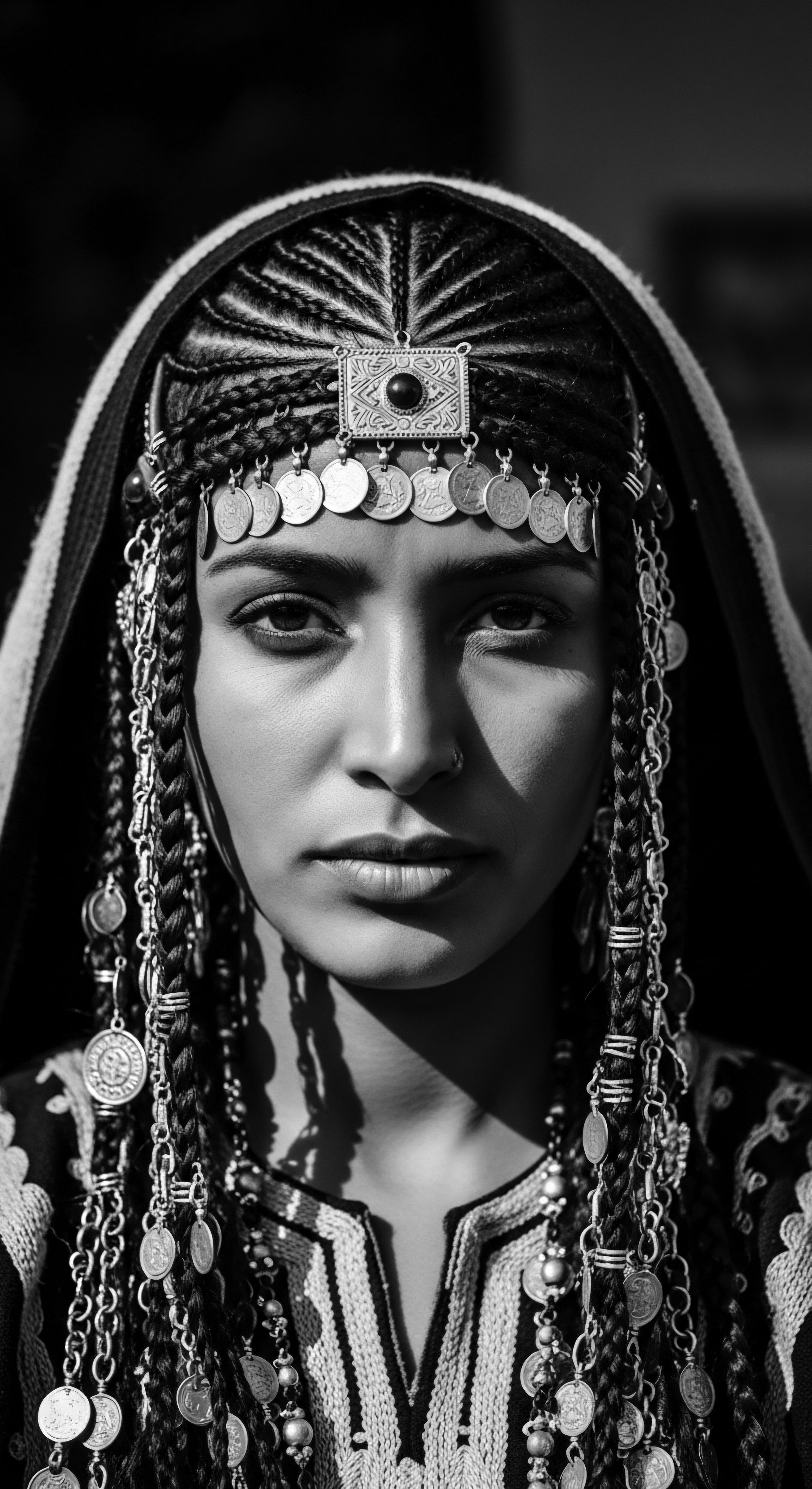
The Sacred Filament
Across the African continent, from the Nile’s banks to the southern plains, hair was regarded as more than a biological outgrowth. It was often viewed as a sacred extension of the self, a conduit to the divine, and a repository of personal and ancestral power. This reverence for hair, especially for the resilient and versatile nature of textured hair, made it an ideal medium for conveying a multitude of messages. The sheer act of manipulating textured strands into complex formations speaks to a deep connection with the physical properties of hair itself.
Its natural coils and curves, when intertwined, create a stable structure capable of holding elaborate designs for extended periods. This intrinsic quality allowed for the development of styles that were not only visually striking but also functionally robust, standing as a testament to the symbiotic relationship between human creativity and the hair’s elemental biology.
Braided styles in Africa served as a living language, conveying social status, age, marital state, tribal belonging, and spiritual connections across communities.
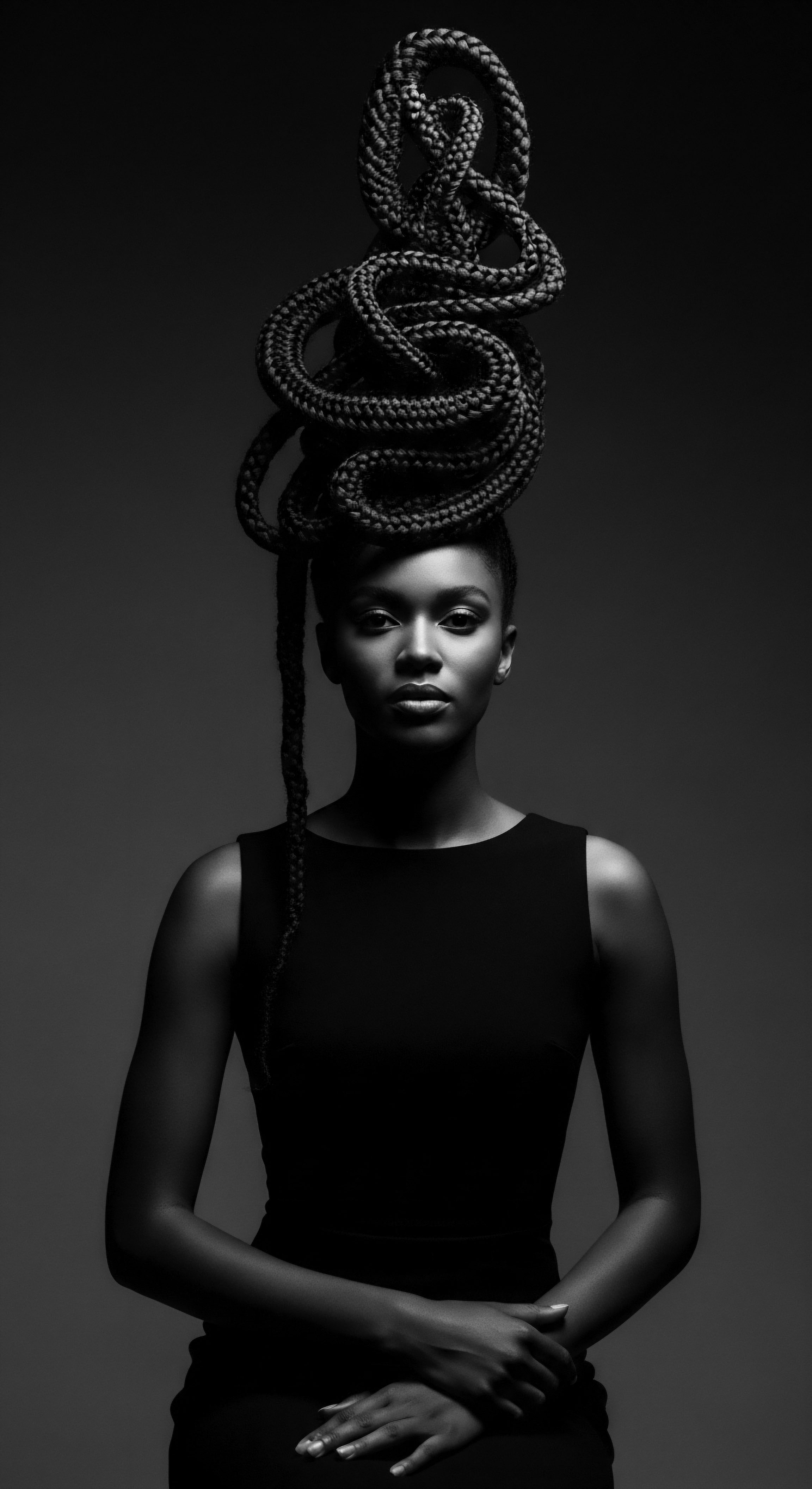
Ancestral Anatomy and Textured Hair
The anatomy of textured hair, with its unique elliptical follicle shape and varied curl patterns, lends itself uniquely to braiding. Unlike straight hair, which might slip or loosen easily, the natural friction and coiling of textured strands allow for tightly woven, enduring structures. This biological predisposition was undoubtedly recognized and utilized by early African civilizations.
Hairdressers of ancient times possessed an intuitive understanding of hair’s physics, developing techniques that honored its inherent characteristics. The resilience of textured hair, its capacity to be coiled, twisted, and braided without breaking, allowed for the creation of styles that could endure the rigors of daily life, agricultural work, and lengthy journeys, all while maintaining their symbolic integrity.
- Hair Follicle Shape ❉ The typically oval or elliptical cross-section of textured hair follicles results in a curved hair shaft, producing curls, coils, and kinks. This shape helps create the natural grip necessary for durable braids.
- Curl Pattern Density ❉ The close packing of coils and curls on the scalp provides a dense, voluminous base for intricate designs, allowing braiders to sculpt hair into sophisticated geometric patterns.
- Moisture Retention ❉ The helical structure of textured hair means it can be more prone to dryness. Traditional braiding practices often incorporated natural oils and butters, providing essential moisture and protection from environmental elements.
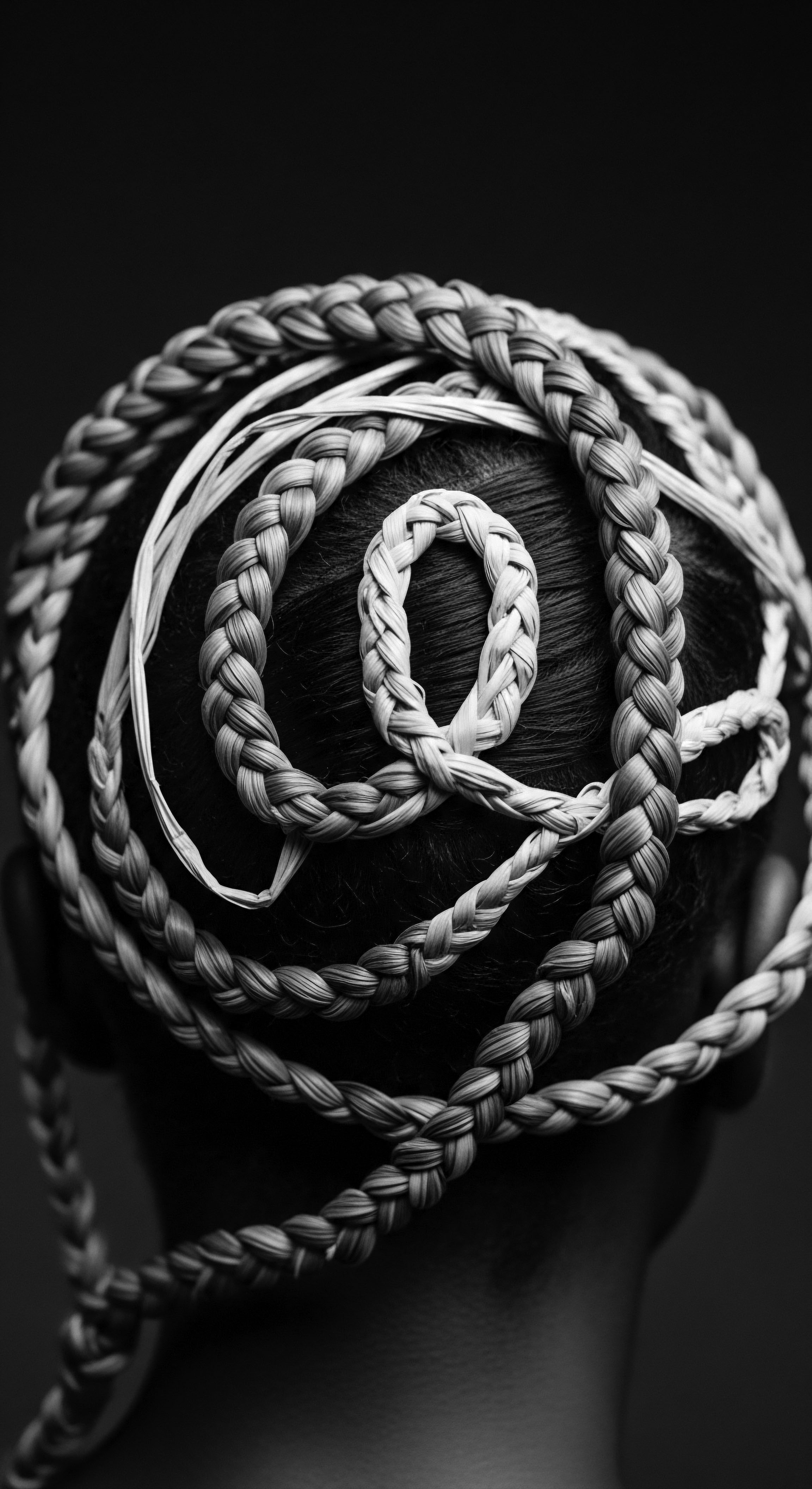
The Lexicon of Adornment
In pre-colonial Africa, a person’s hairstyle could instantly communicate a wealth of information to those who understood its silent language. This visual communication system was highly sophisticated, allowing individuals to express their identity within their community. Hairstyle was a marker of age, for example, with distinct styles marking the transition from childhood to adolescence, and then to adulthood and elder status. A young woman might wear a specific braided style to signal her eligibility for marriage, while a married woman’s braids could indicate her fertility or the number of children she had.
Beyond personal attributes, braided styles also served as powerful symbols of tribal affiliation and social rank. Different ethnic groups and regions cultivated their own distinctive patterns and adornments, allowing individuals to recognize kinship and shared heritage. The specific direction of cornrows or the number of braids might signify a particular tribe or even a family lineage.
Warriors and kings often wore styles that communicated their status and power within society. This intricate system ensured that hair was not merely an aesthetic choice but a dynamic element of social cohesion and cultural identification.
| Social Indicator Age |
| Braided Meaning Conveyed Transition through life stages, maturity. |
| Cultural Context / Example Young girls might wear distinct styles signifying innocence; elaborate braids often marked initiation into womanhood. |
| Social Indicator Marital Status |
| Braided Meaning Conveyed Availability, marriage, or widowhood. |
| Cultural Context / Example Specific styles could indicate a woman was unmarried, married, or in mourning after losing a spouse. |
| Social Indicator Social Rank |
| Braided Meaning Conveyed Leadership, wealth, communal standing. |
| Cultural Context / Example More complex, time-consuming styles, often adorned with precious materials, could signify higher status. |
| Social Indicator Tribal Affiliation |
| Braided Meaning Conveyed Ethnic identity, geographic origin. |
| Cultural Context / Example Unique patterns were specific to particular tribes or regions, serving as visual identifiers. |
| Social Indicator Spiritual Beliefs |
| Braided Meaning Conveyed Connection to deities, protection, blessings. |
| Cultural Context / Example Some styles were associated with specific spiritual practices or were believed to ward off negativity. |

Ritual
The act of braiding textured hair in Africa has always extended beyond mere styling; it is a ritual, a communal practice steeped in ancestral wisdom and shared humanity. These rituals, passed down through the hands of elders and the laughter of kin, speak to a profound connection to hair as a sacred part of self and community. The meticulous care involved in preparing and braiding hair transformed the process into a deliberate, almost meditative act, one that solidified bonds and transmitted cultural knowledge across generations.
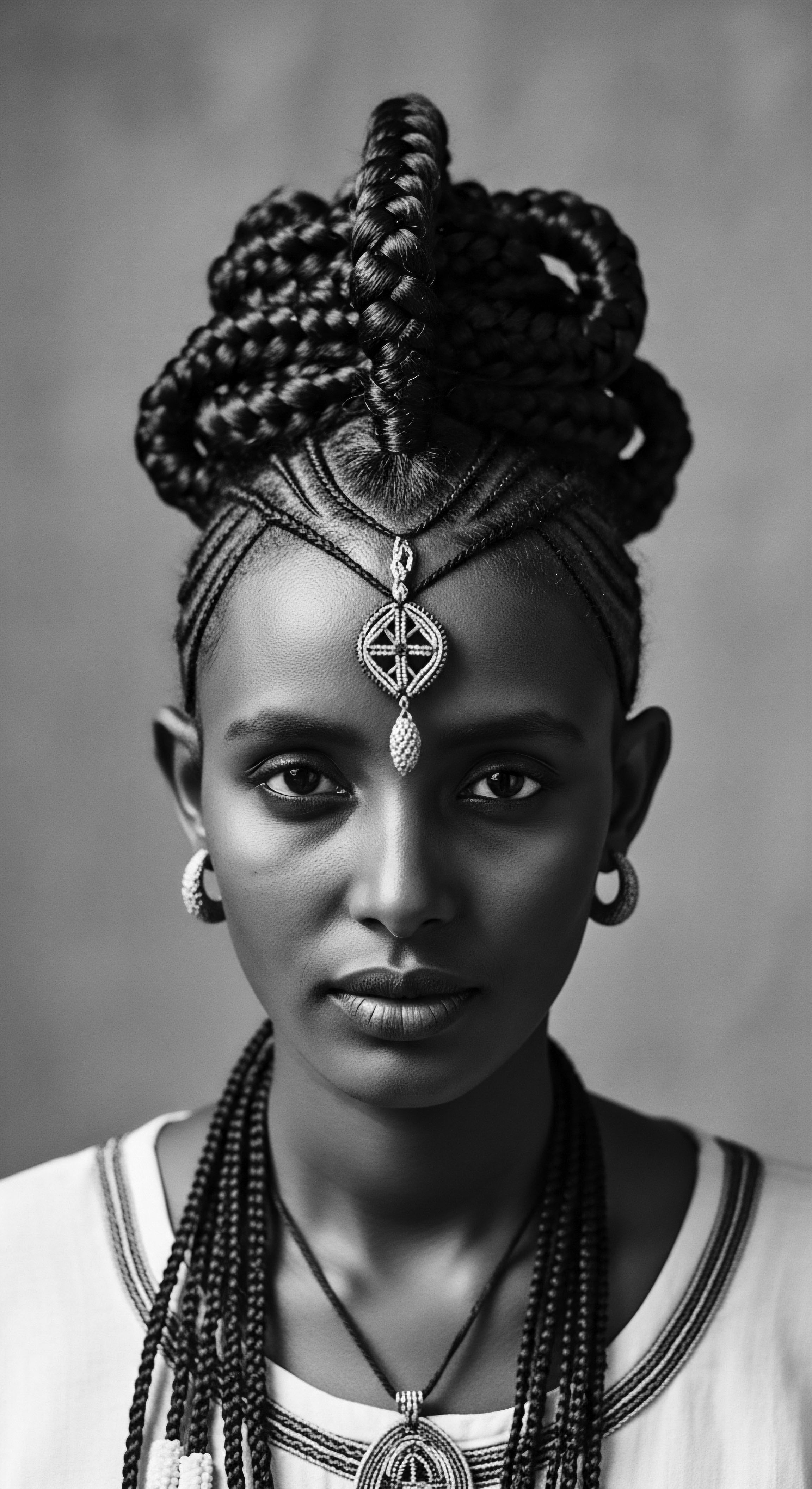
The Communal Caress of Styling
For many African communities, braiding sessions were deeply social affairs, occasions for bonding, storytelling, and the sharing of familial histories. Mothers would braid their daughters’ hair, grandmothers would guide younger hands, and friends would gather, their voices weaving as intricately as the hair itself. This communal aspect of hair care fostered social cohesion, creating spaces where knowledge about traditional practices, herbal remedies, and community lore could be exchanged.
It was a time of teaching and learning, of quiet intimacy and shared purpose. The hours spent on a braiding session were not lost time; they were moments of cultural sustenance, a living classroom where ancestral ways were affirmed and re-enacted.
Consider the Yoruba People of Nigeria, where hairstyling was considered an art form with deep spiritual significance. Skilled braiders held positions of high respect, their hands not merely shaping hair but also channeling protective energies. Styles such as the “Irun Kiko,” a form of thread-wrapping, not only served as striking visual displays but also carried meanings related to femininity, marriage, and rites of passage. This speaks to the holistic perception of hair care, where physical appearance intertwined seamlessly with spiritual well-being and social roles.
The ritual of braiding fostered community bonds, transmitted cultural knowledge, and intertwined physical beauty with spiritual and social roles.

Why Did Certain Braids Mark Rites of Passage?
Braided styles frequently marked significant life transitions, signaling a person’s readiness for a new stage of existence. Young women, for instance, often received elaborate braided designs during initiation ceremonies, marking their passage from childhood to adulthood and signifying their eligibility for marriage. For Maasai young men, or morans, distinctive shaved and braided styles accompanied their initiation into warrior status, symbolizing strength and bravery.
These styles were not static; they changed with a person’s life journey, reflecting their growth, their responsibilities, and their experiences. The changes in hairstyle visually announced a shift in social standing and communal expectations.
The practice of hair modification for rites of passage was not limited to growth and styling. In some instances, the act of cutting or shaving hair was equally symbolic. For example, some men would cut their hair only during mourning for a close relative, the act symbolizing a desolated spirit. The severed hair would then be disposed of ceremoniously, often in a river, underscoring the spiritual connection to the body and its parts.

Traditional Tools and Techniques
The mastery of braiding techniques in Africa was a specialized skill, honed over generations. The tools were often simple, drawing directly from the natural environment, yet their application was sophisticated. These traditional tools and techniques contributed to the longevity and artistry of braided styles.
- Combs ❉ Hand-carved from wood or bone, these were essential for sectioning and detangling, preparing the hair for the intricate work of braiding.
- Natural Fibers ❉ Materials like raffia, sisal, or even specific grasses were often incorporated into braids to add length, volume, or to create a particular texture or shape. This practice allowed for the creation of styles that defied the natural length of one’s hair, offering further avenues for symbolic expression.
- Adornments ❉ Beads crafted from clay, wood, or glass, cowrie shells, metal rings, and even precious stones were woven directly into braids or used to decorate finished styles. These adornments carried their own symbolic weight, sometimes indicating wealth, nobility, or spiritual protection.
These methods, deeply tied to the availability of local resources and generations of inherited skill, reflect a profound appreciation for hair as a medium for both practical and symbolic expression. The durability and protective qualities of many braided styles, crafted with these traditional tools and techniques, also made them ideal for the demanding daily life in various African climates, shielding the scalp and strands from harsh sun and elements.
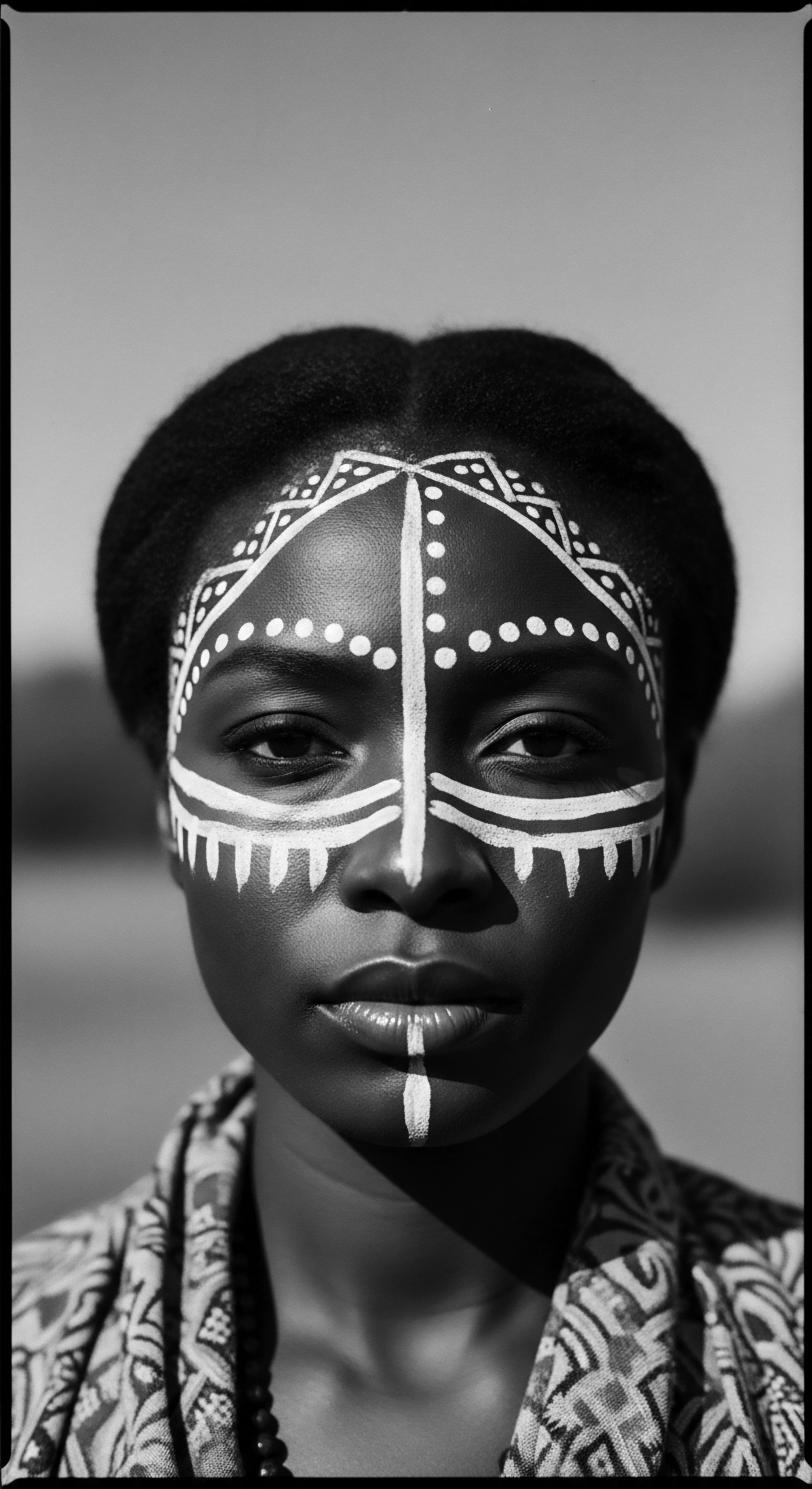
Relay
The significance of braided styles in Africa did not cease with their initial creation or their function within pre-colonial societies. These styles served as a powerful relay, transmitting cultural memory, resistance, and resilience through centuries, even across the vast ocean of forced displacement. They became a living archive, communicating identity and shaping futures in profound, often subversive, ways. This continuity, a vibrant thread connecting ancestral practices to contemporary expression, speaks volumes about the enduring power of textured hair heritage.

The Unseen Map
During the transatlantic slave trade, when millions of Africans were forcibly removed from their homelands, their hair became a crucial, silent tool of resistance. Upon arrival in the Americas, enslavers often shaved the heads of captured Africans as an act of dehumanization, a deliberate attempt to strip away their cultural identity. Yet, despite this traumatic rupture, the profound knowledge of hair braiding persisted. Enslaved Africans, particularly women, found ways to continue these ancestral practices, adapting them to new, oppressive circumstances.
A powerful example of this historical relay is found in the story of cornrows. These tightly woven braids, laid close to the scalp, became far more than a hairstyle. In some instances, enslaved women used cornrows to encode messages and maps, quite literally sketching escape routes to freedom into their hair. Small seeds or even grains of gold could be concealed within these intricate patterns, vital provisions for those risking everything for liberty.
This remarkable act of ingenuity transformed a cultural practice into a form of resistance technology, a testament to the profound connection between hair, heritage, and survival. The very act of braiding, often a communal one, became a secret meeting place, a whispered exchange of hope and defiance.
Braided styles became secret maps and symbols of defiance for enslaved Africans, connecting them to heritage and the quest for freedom.

How Did Braided Styles Influence Identity Beyond Africa?
The transatlantic dispersal of African peoples ensured that braided traditions took root and evolved across the diaspora, particularly in the Americas and the Caribbean. Here, amidst the pressures to conform to Eurocentric beauty standards, braided styles remained a powerful marker of Black identity and cultural preservation. The persistence of these styles, even when facing discrimination and ridicule, underscored their deep significance as symbols of pride and resistance against oppressive norms. For instance, in 1786, New Orleans enacted the Tignon Laws, which compelled Creole women of color to cover their hair with kerchiefs, called tignons, in public.
This law aimed to visually mark these women as belonging to an inferior social class, despite some being free. Yet, these women, with remarkable spirit, transformed the imposed headwraps into elaborate, fashionable accessories, turning a symbol of oppression into an expression of their enduring beauty and resilience. This act, while not a direct braiding example, highlights the broader strategic use of head adornment to retain cultural selfhood in the face of attempts to erase it.
In the mid-20th century, during the Civil Rights Movement in the United States, the resurgence of natural hairstyles, including various forms of braids and Afros, became a potent political statement. These styles represented a powerful rejection of chemical straightening and assimilation, serving as emblems of Black pride, unity, and a renewed connection to African roots. This continued to be a relay of ancestral wisdom, adapting to new political and social landscapes, yet retaining its core message of self-acceptance and cultural affirmation.
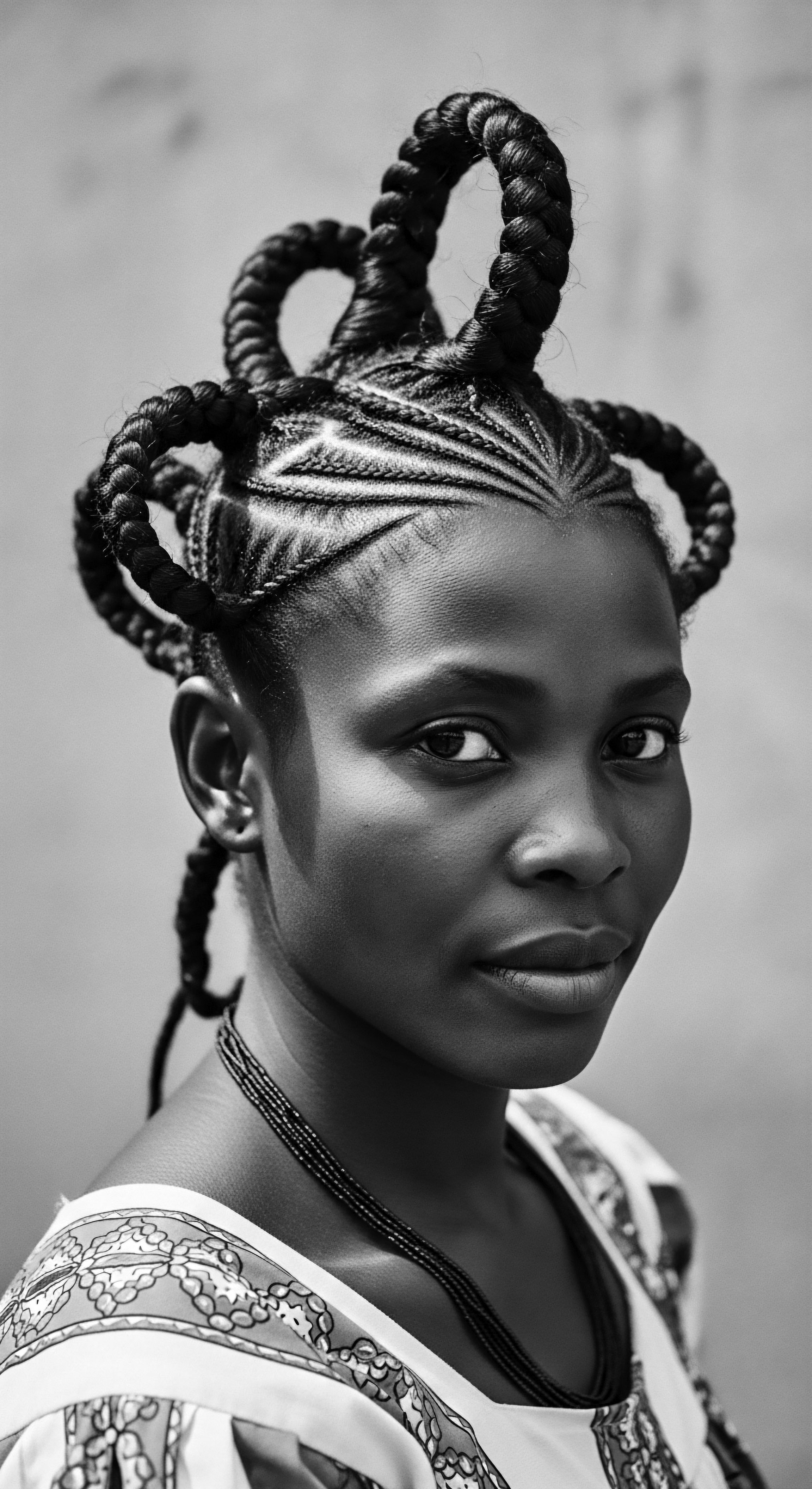
The Enduring Codes of Expression
Even today, the complex grammar of African braided styles continues to speak volumes. Modern adaptations often carry echoes of ancient meanings, even if unconsciously. The popularity of styles like box braids, Fulani braids, and cornrows globally speaks to their aesthetic appeal, but for individuals of African and mixed-race descent, these styles retain a deeper resonance.
They are a tangible link to ancestry, a visible declaration of heritage. The time-consuming nature of many braided styles also continues the tradition of communal bonding, as hours spent in a salon or home often become spaces for conversation, camaraderie, and the sharing of lived experiences.
The interplay of science and heritage further illuminates this relay. While ancient practitioners intuitively understood the protective qualities of braids for textured hair, modern trichology validates these observations. Tightly woven styles minimize manipulation, reduce breakage, and shield strands from environmental aggressors, all contributing to hair health. This scientific understanding underscores the wisdom embedded in ancestral care practices, demonstrating how long-standing traditions often possessed practical benefits beyond their symbolic value.

Reflection
To contemplate the historical meanings conveyed by braided styles in Africa is to stand at the confluence of art, science, and spirit. It reveals textured hair not merely as biological fiber, but as a profound repository of collective memory, a living document of human experience. From the earliest markings of status and belonging to the strategic encoding of resistance during periods of immense suffering, braids have always been more than an arrangement of strands; they are a declaration. They embody a silent, yet powerfully articulate, language spoken by hands across generations, a language that echoes the very soul of a strand.
The continuing global appreciation for braided styles, for all their versatility and beauty, rests upon the foundational heritage they represent. For Black and mixed-race individuals, these styles are a palpable connection to ancestral ingenuity, to the resilience of a people who, even when stripped of so much, held fast to the visual narratives etched into their crowns. Understanding this deep history invites a reverence for the care, the patience, and the cultural wisdom inherent in every twist and plait.
It calls us to honor the journey of textured hair, recognizing it as a luminous, evolving archive of identity and enduring spirit. This knowledge encourages us to wear our heritage not just on our heads, but in our hearts, as a testament to the stories that continue to shape who we are.

References
- Byrd, Ayana D. and Lori L. Tharps. Hair Story ❉ Untangling the Roots of Black Hair in America. St. Martin’s Press, 2002.
- Dabiri, Emma. Twisted ❉ The Tangled History of Black Hair Culture. Harper Perennial, 2020.
- Essel, Victoria. “Hair Styling and the Significance attached to this Practice Have Played an Important Role in the African Traditional Culture.” The SAGE Encyclopedia of African Cultural Heritage in North America, edited by Harriet Akanmori, SAGE Publications, 2015.
- Johnson, Tammy, and Talethia Bankhead. “Hair it is ❉ Examining the Experiences of Black Women with Natural Hair.” Open Journal of Social Sciences, vol. 2, no. 1, 2014, pp. 86-100.
- Kindavyi, Lorraine, and Kwon Young Suk. “African women’s hairstyles as communication media ❉ A comparison between young and old women’s hairstyles.” The Research Journal of the Costume Culture, vol. 23, no. 6, 2015.
- Patton, Tracey Owen. “Hey Girl, Am I More Than My Hair? African American Women and Their Struggles with Beauty, Body Image, and Hair.” NWSA Journal, vol. 18, no. 2, 2006, pp. 24-51.
- Sieber, Roy, and Frank Herreman. Hair in African Art and Culture. Museum for African Art, 2000.
- Tshiki, Nonkoliso Andiswa. “African Hairstyles – The ‘Dreaded’ Colonial Legacy.” The Gale Review, 23 Nov. 2021.
